8 Nights / 9 Days
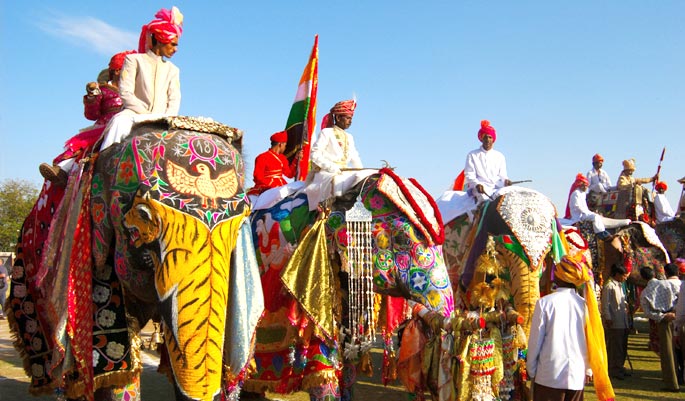
You will be met on arrival at the International airport and transferred to the hotel.
DELHI, India’s capital is a city built in layers. Over millennia, with the city as epicenter, great empires have risen and fallen, one built atop the remains of another. Consequently, countless ruins and monuments dot the city, each with a story to tell. Alongside, New Delhi’s wide multi-lane motorways, bustling with shopping malls, fast cars and steel and glass office complexes, belong unmistakably to the 21st century.
In the afternoon proceed to visit Nizamuddin. Enjoy Qawwali at Nizamuddin Dargah. This experience takes you to a little mohalla (neighborhood) in Delhi called Dargah Hazrat Nizamuddin. Here you will be introduced to Sufism, a mystical version of Islam, and its teachings of Ishq (love), Aql (intelligence) and Ilm (knowledge). You will walk the ancient crowded alleys to explore monuments and sites associated with famous Sufi saints including Nizamuddin Aulia, Amir Khusrau and Mirza Ghalib. Finally you will enjoy Sufi musical showcase called a qawwali.
Overnight will be at Delhi.
Breakfast will be at hotel.
After breakfast at the hotel start a guided tour of Delhi.
The tour will begin with a visit to Raj Ghat, a simple memorial to Mahatma Gandhi. He is also famously known as the “father of the nation”.
One of the most important buildings of Old Delhi is the RED FORT. The magnificent Red Fort was built during the years 1638 – 48 when the Moghul Empire was at its peak. In 1638 Shahjahan transferred his capital from Agra to Delhi and laid the foundations of Shahjahanabad, the seventh city of Delhi. It is enclosed by a rubble stonewall, with bastions, gates and wickets at intervals. Of its fourteen gates, the important ones are the Mori, Lahori, Ajmeri, Turkman, Kashmiri and Delhi gates, some of which have already been demolished. His famous citadel, the Lal-Qila, or the Red Fort, lying at the town's northern end on the right bank or the Yamuna and south of Salimgarh, was begun in 1639 and completed after nine years. The Red Fort is different from the Agra fort and is better planned, because at its back lies the experience gained by Shahjahan at Agra, and because it was the work of one hand. It is an irregular octagon, with two long sides on the east and west, and with two main gates, one on the west and the other on the south, called Lahori and Delhi gates respectively. While the walls, gates and a few other structures in the fort are constructed of red sandstone, marble has been largely used in the palaces.
Continue your tour to Jama Masjid by bicycle rickshaws, one of Asia’s largest mosques. People stream in and out of the mosque continuously and the presence of a nearby bazaar means that the area is rarely quiet.
Enjoy the rickshaw ride at Old Delhi peddling through the narrow by lanes of Chandani Chowk.
Later proceed for a sightseeing tour of New Delhi, which reflects the legacy of the British left behind. The division between New and Old Delhi is the division between the capitals of the British and the Mughals respectively. The division in the walled city and New Delhi also marks the division in the life-styles. The walled city is all tradition where one will be able to glean a past life-style in all its facets, colors and spells. New Delhi in contrast, is a city trying to live up to the best of 21st century standards.
Imperial Delhi will include the Qutub Minar, the tallest stone tower in India. It is built in red and buff sandstone with a diameter of 14.32 m at the base and about 2.75 m on the top with a height of 72.5 m. Qutbu'd-Din Aibak laid the foundation of the tower in AD 1199 for the use of the mu'azzin (crier) to give calls for prayer and raised the first floor, to which were added three more floors by his successor and son-in-law, Shamsu'd-Din Iltutmish (AD 1211-36). All the tiers are surrounded by a projected balcony encircling the tower and supported by stone brackets, which are decorated with honeycomb design, more conspicuously in the first floor.
Next stop would be the majestic Humayun’s Tomb. Humayun died in 1556, and his widow Hamida Banu Begum, also known as Haji Begum, commenced the construction of his tomb in 1569, fourteen years after his death. It is the first distinct example of proper Mughal style, which was inspired by Persian architecture. It is well known that Humayun picked up the principles of Persian architecture during his exile, and he himself is likely to have planned the tomb, although there is no record to that effect.
The tour also includes a drive past the imposing India Gate, the Parliament building and the Rastrapathi Bhawan, the President’s residence.
Overnight will be at Delhi.
Breakfast will be at the hotel.
Drive to Agra en-route visit to Sikandra.
SIKANDRA – This beautifully maintained monument is where EMPEROR AKBAR was buried. It is a very low profile monument but it has one of the most awe – inspiring tombs. It is surreal how one of the greatest emperors has been put to rest. The manicured lawns has spotted and other varieties of deer roaming in them. Named after the Afghan ruler Sikander Lodi, Sikandra is the final resting place of Emperor Akbar. The Emperor began the construction of his own garden mausoleum during his lifetime. However, the construction was completed by his son Jahangir in 1613. An impressive marble - inlaid gateway leads to the spacious four - tiered monument which is crowned by a white marble cenotaph and screen. What is interesting is that the structure imbibes the best of Hindu, Christian, Islamic, Buddhist, Jain motifs, signifying the new religion started by Akbar – the DEEN E ILAHI.
Continue drive to Agra. Reach and check into the hotel.
AGRA: Two great Mughal monarchs, Akbar and Shah Jahan, transformed the little village of Agra into a befitting second capital of the Mughal Empire - giving it the name Dar-ul-Khilafat {seat of the Emperor}. Today a visitor to Agra is caught up in a world of contrasting edifices, of red sandstone and white marble, narrow galleys and quaint buggies, and that irresistible charm that this favorite city of the Mughals still retains. It is not surprising, that modern Agra still reflects its Mughal heritage most conspicuously.
Today, you will visit Agra Fort.
AGRA FORT – The red sandstone structure is surrounded by chahar-bagh, a four-square formal garden. Built by the famed Mughal emperor Akbar in 1565 AD, the fort is predominantly of red sandstone. Ensconced within is the picture perfect Pearl Mosque, which is a major tourist attraction. It lies on the bend of the river Yamuna, almost in the heart of the town. Akbar built it as his citadel over the years 1563-73 in the finest architectural style. It has imposing gates and walls of red sandstone and a moat.
In the evening, proceed for a HERITAGE WALK to the other side of River YAMUNA with your guide after lunch.
The other side of the TAJ MAHAL across the river Yamuna where Mughal History has been written in edicts of stone, the river Yamuna lined with the residences of mobility was the artery, the very lifeline, which fostered the development of Mughal Agra. These heritage relics have been weaved together for a historic experience of Mughal Agra. You would walk through the various monuments in midst of rural setting intertwined with the communities along with stunning view of the TAJ MAHAL.
Enjoy the extended hospitality of the local villagers sipping a cup of Masala Chai on the Tea Terrace with standard, comfortable, clean, affordable, and safe facilities. The whole village walk through India’s Mughal History and amiable people is an unforgettable experience.
Overnight will be at Agra.
Wake up early and proceed for a sunrise visit of Taj Mahal.
TAJ MAHAL - Little needs to be said about this architectural wonder which is always the soul raison-de-etre for every tourist's visit to Agra. Built by Shah Jahan, the Taj is a white marble memorial to his beautiful wife Mumtaz Mahal. This monument took 22 years to be completed and was designed, and planned by Persian architect Ustad Isa. Apart from its stunning design balance and perfect symmetry, the Taj is also noted particularly for its elegant domes, intricately carved screens and some of the best inlay work ever seen.
Come back and enjoy the breakfast.
After breakfast proceed to Jaipur en route visiting Fatehpur Sikri and Abhaneri.
Fatehpur Sikri is 37 km west of Agra. JALAL – UD – DIN – MUHAMMAD AKBAR named Akbar, Humanyun's son, accessed the throne at the tender age of 14. While hunting around Sikri his curiosity was aroused by the songs of some minstrels about the celebrated Khwaja -Mu'inu'd-din Chisti, the founder of the Chisti order of SUFIS. Akbar, who was without a male heir heard about Saint Salim Chisti and visited him in the year 1568, the saint blessed him with 3 sons and in gratitude Akbar ordered the great mosque of Fatehpur Sikri, built under his supervision. As a mark of respect to the saint, Akbar shifted his capital to Fatehpur Sikri and built various secular buildings like the Diwan -I-Am, Diwan-I-Khas, Jodhabai palace, Birbal's house, Marian's house and the Panchmahal.
Abhaneri Village is famous for its post Gupta or early medieval monuments. The sculpture and architecture of Abhaneri suggests that it must have been a great center of art and architecture. The sculptures of Abhaneri are the best example of Gurjar Pratihari art. This flourishing town has ruined by the Mughal Emperor Mahmud Ghaznavi in one of his invasions. The village has contributed numerous pieces of sculpture to various museums worldwide. The name of the village Abhaneri is so called because the local Goddess Harshat Mata is shown portrayed in a joyous mood and spreads brightness or Abha all around. The village’s original name was Abha Nagri.
The main attraction though is the STEP WELL of Chand Baori. Chand Baori is about 100 feet deep open well with flights of steps on three sides is another 10th century monument. The stairs of the Chand Baori are in the shape of an inverted English letter “V” in sets of 4-5 steps. This Baori is not an ordinary structure, but is a marvel of Architecture. The Chand Baori has beautiful carved panels inserted into the sides. Nobody has been able to count the steps. One can see the two royal toilets with carved windows and Jharokhas, which were used by the then Kings & Queens.
Continue drive to Jaipur. Reach and check in to the hotel.
Named after Maharajah Sawai Jai Singh II, the largest city in the desert state of Rajasthan is popularly known as the Pink City. This is due to the fact that almost all buildings, old and new are pink in colour. These are made in the locally available red sand stone. In modern times, however, most of the buildings are painted pink. Legend has it that when the Prince of Wales and Queen Victoria visited India around the late 18th Century, the Maharajah ordered the city to be painted pink in their honour. The colour Pink, in Rajput culture signifies hospitality. The tradition remained uninterrupted and now it is mandatory by law for residents to paint their houses pink. Jaipur, like most of the Rajasthan cities is dotted with forts and palaces. What distinguishes Jaipur from the rest of the states is the fact that this city has been the home to the fiercely independent indignant Rajput warriors, who braved the annihilating incursion of the Mughals and Marathas. Their valour in battle is closely equated with their artistry in architecture. The imposing forts and magnanimous palaces bear testimony to that. Sightseeing in Jaipur en9Wes, the Amer Fort, The Jaigad Fort, the City Palace, Hawa Mahal and Jantar Mantar. Travel to Jaipur is incomplete without shopping for colour fabric and some handmade artifacts.
Overnight stay will be in Jaipur.
Breakfast will be at hotel.
Proceed for a morning excursion will be taken to the Amber Fort. Enjoy the fort ascent on elephant back in a royal manner.
AMBER FORT PALACE - Amber is the classic romantic Rajasthani fort palace. Its construction was started by Man Singh I in 1592, and completed by his descendent Jai Singh I. Its forbidding exterior belies an inner paradise where a beautiful fusion of Mughal and Hindu styles finds its ultimate expression.
In afternoon, proceed for sightseeing tour of Jaipur.
CITY PALACE - A delightful blend of Mughal and traditional Rajasthani architecture, the City Palace sprawls over one-seventh of the area in the walled city. It houses the Chandra Mahal, Shri Govind Dev Temple and the City Palace Museum.
JANTAR MANTAR - This is the largest and the best preserved of the five observatories built by Jai Singh II in different parts of the country. This observatory consisting of outsized astronomical instruments is still in use.
HAWA MAHAL - The ornamental facade of this "Palace of Winds" is a prominent landmark in Jaipur. It is a five-storey structure of sandstone plastered pink encrusted with fine trelliswork and elaborate balconies. The palace has 953 niches and windows. Built in 1799 by Pratap Singh, the Mahal was a royal grandstand for the palace women.
Afternoon is free for you to relax shop or explore independently. Shopping is superb in Jaipur, particularly for gold and silver jewellery, pottery, tie-dye materials, silk, saris, wooden handicrafts and carpets.
Head back to your hotel in the evening.
Overnight will be at Jaipur.
Breakfast will be at hotel.
Post breakfast, drive towards Ajmer.
Ajmer is the most sacred of all Muslim places of pilgrimage in India. Ajmer is a green oasis on the Shore of Ana Sagar Lake, hemmed in by barren hills. Historically, Ajmer has always had great strategic importance. It was founded in 7th century by Ajaipal Chauhan. He named it Ajaimeru the 'invincible hill'. The city's Muslim history began when Prithviraj Chau-han lost Ajmer to Sultan Muhammad Ghori in 1193 A.D. The Persian saint Khwaja Moinuddin Chisti who came with Muhammad Ghori from Persia in 1192 settled here. Thus the place where he was buried is today known as the Dargah Sharif. Construction of the shrine was completed by Humanyun’s and the gates were added by the Nizam of Hyderabad. Later Shah Jahan constructed a mosque of white marble; it has 11 arches and a Persian inscription running the full length of the building.
Today, you will visit:
The Dargah: At the foot of a barren hill, is situated India's most important Pilgrimage centre for people from all faith. It is the splendid tomb of the Sufi saint Khwaja Moinuddin Chisti, more popularly known as Khwaja Sharif.
Shahjahan's Mosque: In the corner of the inner court of the Dargah, is a magnificent building in white marble with a long (30.5) and narrow court having low arcade and delicate carvings with trellis work. It is the most marvelous all the sanctums within the sanctuary of the Dargah.
Adhai-Din-Ka-Jhonpra: A remarkable structure, this is a masterpiece of indo Islamic architecture located on the outskirts of the city. Just beyond the Dargah. As the legend goes, its construction took two and a half days. (Adhai-Din) to complete, It was originally a Sanskrit college, built within a temple. in 1193 A.D. Mohammad Ghauri conquered Ajmer and converted the building into a mosque by adding a seven arched wall in front of the pillared hall in just two-and-a-half days (Adhai-din) and hence the name. The district pillars and arched "screen with its ruined minarets make it a splendid architectural masterpiece.
Taragarh Fort: A steep one and half hour climb beyond the Adhai-Din-ka-Jhonpra leads to the ruins of the Taragarh Fort perched on a hill. One can have an excellent view of the city from here. The fort was the site of the military activity during the Mughal period later used as a sanatorium by the British
Overnight will be at Ajmer.
Breakfast will be at the hotel.
Post breakfast proceed to Udaipur.
Enroute visit Kumbhalgarh Fort.
Cradled in the cluster of thirteen mountain peaks of the Aravalli ranges, the formidable medieval citadel- Kumbalgarh stands a wary sentinel to the past glory. Rising from a prominent ridge, 1914 metres high from the sea level, the fort was built in 15th century AD by Maharana Kumbha (1419-63 AD) and is the principal fortification after Chittaurgarh, lying 90 km north-west of Udaipur.
The massive fort, en9Wed by a 36-km long wall, has seven majestic gates and seven ramparts, one within the other. Rounded bastions and high watchtowers strengthen the crenellated walls of the fort making it an impregnable structure.
Generally, it is perceived that Kumbhalgarh (also written as Kumbhalgadh) is a virtually inaccessible 15th century fort. Many of the travelers who visit Kumbhalgarh have this notion itched overwhelmingly in their mind and they expect an abandoned medieval structure. Fortunately this is not the case and you can find Kumbhalgarh as the hub of delighted activities within easy reach, yet off the beaten track, from well-known destinations.
The town is most famous for the stunning Dilwara Jain temples, built between the 11th and 13th century. These intricately carved marble temples are amazing to behold-not an inch of space has been left uncarved; almost, as if, in a frenzy of inspiration, the artists carved and carved till they could carve no more! Mount Abu also has a pretty lake studded with little islets.
Kumbhalgarh Fort: Though little known, Kumbhalgarh has one of the finest examples of defensive fortifications in entire Rajasthan. Total length of the wall of this fort is 32 kilometers and there are excellent views from the top of the walls. Kumbhalgarh stands on the site of an ancient citadel dating back to the second century A.D., belonging to a Jain descendant of India's Mauryan emperors. Its steel gray ramparts encircle the fertile Shero Mallah Valley, with ancient monuments cenotaphs, ponds, and flourishing farms. In addition, a stroll along the walls of the fort gives great panoramic views.
After the sightseeing visit, continue your drive towards Udaipur. Reach and check into hotel. Relax.
The city of Dawn, Udaipur is a lovely land around the azure lake, hemmed in by the lush hills of the ARAVALLIS. A vision in white drenched in romance and beauty, Udaipur is a fascinating blend of sights, sound and experiences and inspiration for the imagination of poets, painters and writers.
Its kaleidoscope of fairy-tale palaces, lakes, temples, gardens and narrow lanes strewn with stalls, carry the flavour of a heroic past, epitomizing valour and chivalry. Their reflection in the placid waters of the LAKE PICHOLA is an enticing sight.
Udaipur is the jewel of MEWAR – a kingdom ruled by the Sisodia dynasty for 1200 Years.
Overnight will be at Udaipur.
Breakfast will be at hotel.
Proceed for sightseeing tour of Udaipur, stopping first at City Palace.
City Palace – Standing on the east bank of Lake Pichola, is a massive series of palaces built at different times from 1559 A.D. The balconies of the palace provide panoramic views of "Jag Niwas" (the world wide famous Lake palace hotel), Jag Mandir on one side and on the other the city of Udaipur. Its main entrance is through the triple-arched gate - the Tripolia, built in 1725. The way now leads to a series of courtyards, overlapping parathions, terraces, corridors and gardens - a harmonic profusion hard to describe. There is a Suraj Gokhda, where the maharanas of Mewar presented themselves in the times of trouble to the people to restore confidence. The Mor-chowk (Peacock courtyard), gets its name from the vivid mosaics in glass decorating its walls. The chini chitrashala is noteworthy while a series of wall paintings of KRISHNA are on display in Bhim Vilas. There are numerous other places such as Dilkhush Mahal, Sheesh Mahal, Moti Mahal and Krishna villas - in memory of a princess of striking beauty who poisoned herself to avert a bloody battle for her hand by rival princess. Now the palace contains many antique articles, paintings, decorative furniture and utensils and attracts thousands of visitors every day.
Here you will marvel at rooms with mirrored walls and ivory doors, colored glass windows and inlaid marble balconies and the Peacock Courtyard.
Saheliyon ki Bari – Maharana Sangram Singh builds this in the mid-18th century. The 'garden of the maidens' brings to mind the lifestyle of the ladies of the court. The delightful gardens appear discreet and in impeccable taste. There are four pools with dainty kiosks, and all around are flowerbeds, lawns, pools and fountains protected by a series of walls and shady trees. The Foundation of the Saheliyon ki Bari functions solely by water pressure and no pumps are used. The garden has a lotus pool, a sitting room decorated with paintings and glass mosaics. The whole ambiences are flavored by the nostalgia of those beautiful bells enjoying themselves in a lavish aura.
Bagore ki Haveli – This is a very congenial old building built right on the waterfront of Lake Pichola at Gangori Ghat. Amir Chand Badwa, the Prime Minister of Mewar built it in the eighteenth century. The palace has over hundred rooms and some very interesting display of costumes and modern art. The glass and mirror in the interiors of the Haveli delicate work and well preserved too. It also preserves a fine example of Mewar Painting on the walls of Queen's Chamber. The two peacocks made from small pieces of colored glasses are fine examples of glasswork. After the death Badwa the building became the property of Mewar State. It came to be occupied by Maharana Shakti Singh of Bagore who built the palace of the three arches also in 1878 and it acquired its name of Bagore-ki-haveli, the house of Bagore. After independence the structure lay in neglect until 1986 when it housed the West Zone Cultural centre.
Jagdish Temple – The temple is situated in the middle of the city. The temple of Jagannath Rai, now called Jagdish-ji, is a major monument and should be seen carefully. Raised on a tall terrace and completed in 1651, it is a tribute alike to the tenacity of its builders and the resilience of the art tradition it represents. It attaches a double storied Mandapa (hall) to a double - storied, saandhara (that having a covered ambulatory) sanctum. The mandapa has another storey tucked within its pyramidal samavarna (bell - roof) while the hollow clustered spire over the sanctum contains two more, non - functional stories. Lanes taking off from many of the sheharpanah (city wall) converge on the Jagdish Temple and walking leisurely through them brings you face with the many layers of the cultural palimpsest that Udaipur is. Maharana Jagat Singh I built it in 1651 A.D.
In the evening, proceed for Motor launch cruise on the placid waters of Lake Pichola. From the boat you will be able to view the city of Udaipur as it rises majestically above the lake in the middle of the Rajasthan desert. Also visit the Jag Mandir Palace - the other island palace in the middle of the lake. Spend some time at the Jag Mandir Palace.
Overnight will be at Udaipur.
By Air (comfortable afternoon flight)
International departure form Delhi:
By Air
Enjoy a leisurely breakfast at the hotel.
As per flight timing, you will be transferred to airport for your flight to Delhi.
Connect to your international onward flight with sweet memories of classical India.
TOUR ENDS
9W SPECIAL PRIVILEGES:
SMARTPHONE WITH INTERNET ACCESS IMPORTANT NUMBERS
UPGRADES WHEREVER POSSIBLE
UNLIMITED STD AND LOCAL CALLING
UNLIMITED BOTTLED WATER DURING DRIVES
DEDICATED TOUR MANAGER
24*7 GUEST RELATIONS
9W Hospitality Pvt. Ltd. is the vision of highly passionate hospitality professionals, led by a team of skilled financial analysts, tour operators and experienced hoteliers. We own and operate our own restaurants pan India, own and run franchise for popular brands. With years of research, strategic analysis and looking in the future of inbound tourism in our country, we expanded our business to offer services as a destination management company. Due to detailed foreign market research, closely monitoring needs of foreign travelers, identifying international markets, we successfully managed to build a loyal customer base in the span of a few years. Read More...

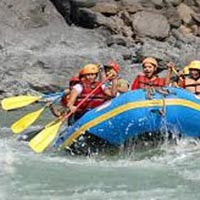 3D/2N
3D/2N
 6D/5N
6D/5N
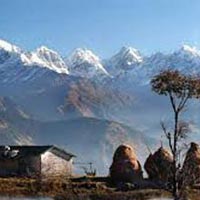 5D/4N
5D/4N
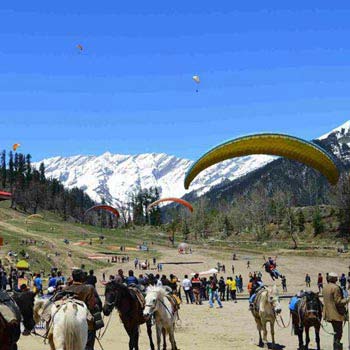 4D/3N
4D/3N
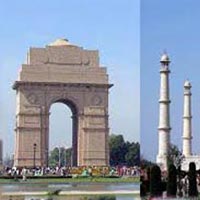 4D/3N
4D/3N
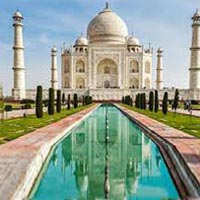 4D/3N
4D/3N
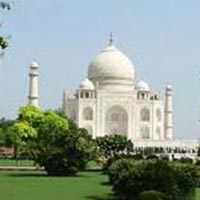 4D/3N
4D/3N
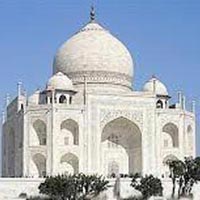 7D/6N
7D/6N
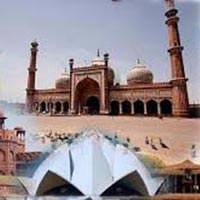 7D/6N
7D/6N
 9D/8N
9D/8N
Birding Tour for Corbett and Uttarakhand
Corbett - Pangot - Kumaon - Sundargarh - UP East - Sahibabad
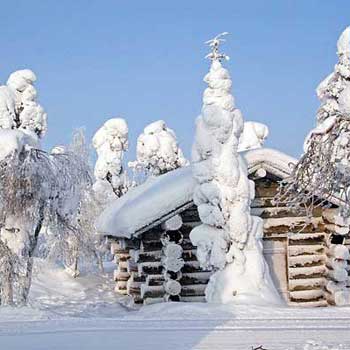 9D/8N
9D/8N
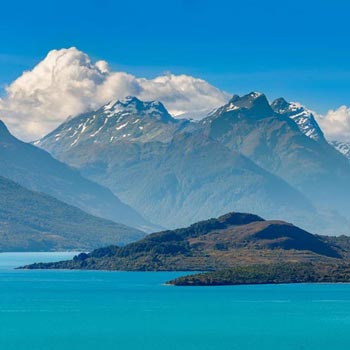 9D/8N
9D/8N
Honeymoon Tour To New Zealand - Colors O..
Auckland - Rotorua - Queenstown - Christchurch
 9D/8N
9D/8N
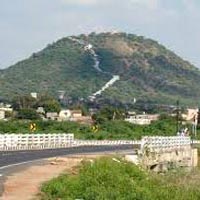 9D/8N
9D/8N
Ahmedabad - Bhuj - Kutch - Dwarka - Somnath - Rajkot - Sasangir
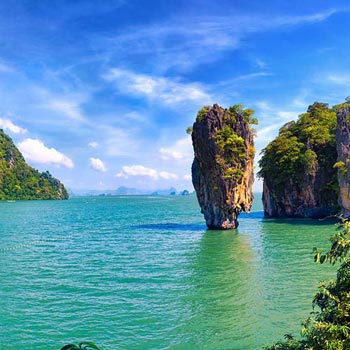 9D/8N
9D/8N
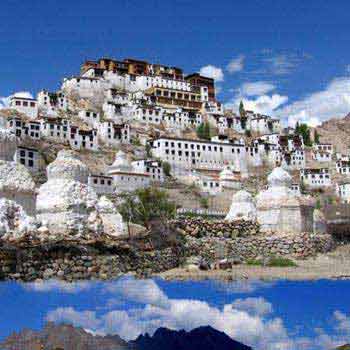 9D/8N
9D/8N
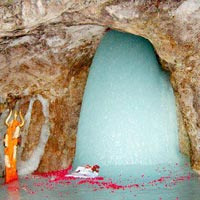 9D/8N
9D/8N
New Delhi - Katra - Anantnag - Srinagar - Ganderbal - Baramulla
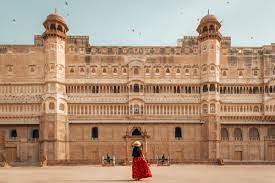 13D/12N
13D/12N
Rajasthan Tour Package 12 Night - 13 Days
Ajmer - Bikaner - Jaipur - Jaisalmer - Jodhpur - Mount Abu - Pushkar - Udaipur
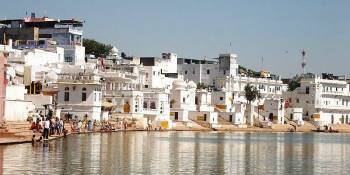 13D/12N
13D/12N
12 Nights Rajasthan Package From Jaipur
Ajmer - Bikaner - Jaipur - Jaisalmer - Jodhpur - Mount Abu - Pushkar - Udaipur
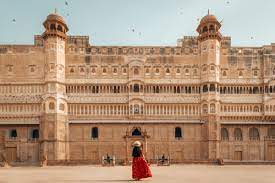 13D/12N
13D/12N
Rajasthan Tour Package 12 Night - 13 Days
Ajmer - Bikaner - Jaipur - Jaisalmer - Jodhpur - Mount Abu - Pushkar - Udaipur
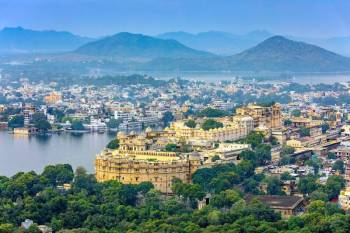 12D/11N
12D/11N
11 Nights 12 Days - Delhi Agra Rajasthan
New Delhi - Mathura - Agra - Jaipur - Ajmer - Pushkar - Udaipur - Mount Abu - Ranak..
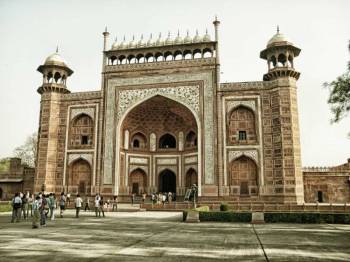 11D/10N
11D/10N
10 Nights Uttar Pradesh Tour Package Fro..
New Delhi - Agra - Prayagraj - Lucknow - Mathura - Varanasi - Ayodhya - Vrindavan -..
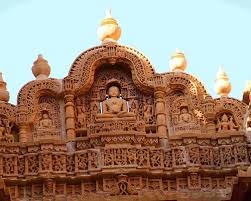 10D/9N
10D/9N
9 Night - 10 Days Rajasthan Tour Package
Ajmer - Jaipur - Jaisalmer - Jodhpur - Mount Abu - Udaipur
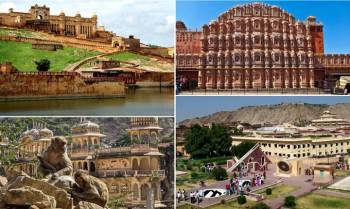 10D/9N
10D/9N
Ajmer - Udaipur - Mount Abu - Jodhpur - ..
Ajmer - Jaisalmer - Jodhpur - Mount Abu - Udaipur - Jaipur
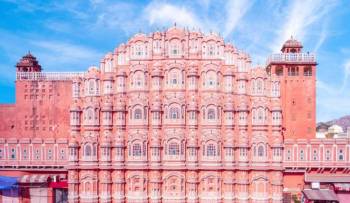 9D/8N
9D/8N
9 Days Jaipur - Ajmer - Udaipur - Mount ..
Ajmer - Jaipur - Jaisalmer - Jodhpur - Mount Abu - Udaipur
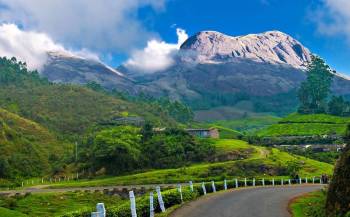 4D/3N
4D/3N